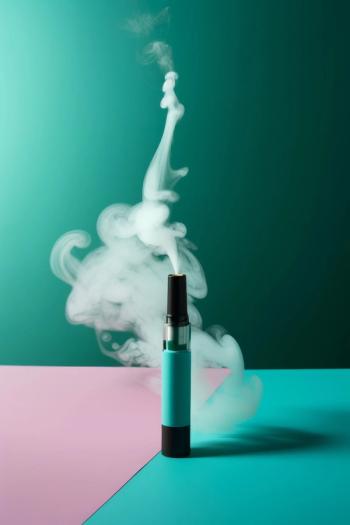
Cannabis Science and Technology
- March/April 2019
- Volume 2
- Issue 2
Factors Influencing Yields in Extraction, Part I: Understanding the Influence of Starting Material and Performing Extraction Calculations
At a glance, modern extraction machines can seem a little mysterious: plant material is added to an extraction chamber, processing parameters are chosen, the extraction process is carried out, and an output of material is collected. Part I of this series examines the two main biologically-inherent starting-material influences.
At a glance, modern extraction machines can seem a little mysterious: plant material is added to an extraction chamber, processing parameters are chosen, the extraction process is carried out, and an output of material is collected. Part I of this series examines the two main biologically-inherent starting-material influences. These include total mass of material loaded in the extraction chamber at the start of an extraction and the component makeup of the material with regards to content of compounds of interest. An extensive review of percent extraction efficiency calculations is also presented.
An extraction’s yield, that is, the amount of components of interest obtained from an extraction’s output, has three main areas of dependency. Spread across a three-part series, these will be discussed as follows. Here, in Part I, we discuss the influence of the starting material, performing extraction calculations and examine the two main biologically-inherent starting-material influences: the total mass of input feedstock to be extracted and the component makeup of that material. An extensive review of percent extraction efficiency calculations is also presented. In Part II, we will examine the impact of material preparation and consider the impact of physical preparation of the feedstock material. Finally, in Part III, we will discuss optimizing an extraction and the associated processing parameters. We will also investigate the impact of conditions of operation: total extraction time and processing parameters.
Influence of the Starting Material
Mass of Starting Material
The most intuitive variable with regards to yield is the mass of input material available for extraction. For example, given identical feedstock and extraction parameters, 100 kg of plant matter would be expected to yield around twice as much extract as the same extraction performed on only 50 kg of material.
This parameter is instinctive, but it is important to realize that starting-material-influence does not stop there.
Makeup of the Starting Material
A further major influence of the starting material on yields is the makeup of the material itself. To best explain what is meant here, consider the cannabis flower.
Components of Interest in Cannabis Flower
Suppose a recipe for a bulk batch of baked goods calls for the cannabinoids extracted from 100 kg of flower. This is a bit of an ambiguous recipe: what mass of cannabinoids can be obtained from this mass of starting material? Intuitively, there is an understanding that it is not 100 kg.
This understanding stems from basic knowledge of plant anatomy (Figure 1). For simplicity, the cannabis flower is divided into three contingents: the lipids, chlorophylls, and cannabinoids. This multicomponent nature is the first layer of the starting-material-makeup factor. If, say, the cannabinoids make up 20% of the flower’s mass, then the maximum possible mass that may be obtained from 100 kg of flower can be calculated to be 20 kg:
total mass × fraction of mass due to component of interest = total mass of component of interest [1]
total mass of flower × fraction of flower mass due to cannabinoids = total mass of cannabinoids [2]
100 kg × 0.20 = 20 kg [3]
It follows, then, that a 100%-efficient extraction would recover 20 kg of these desirables from the extraction process. If no other material were coextracted, a test of the material remaining in the extractor would see a total of 80 kg of residual composed of lipids and chlorophyll, with no trace of cannabinoids remaining.
Example Extraction Calculations
Calculating the percent extraction efficiency (%EE) is the best standard against which to evaluate the success of any extraction. There are two variations of the calculation that can be carried out (Figure 2). The theoretical %EE calculation assumes all mass of the component of interest extracted appears in the extract, with no loss; it is a measure of the mass of component of interest removed from the feedstock. The actual %EE calculation measures the mass of the component of interest present in the extract.
To verify comprehension of this calculation, consider following through the example extraction presented in Figure 2; 100 kg of cannabis flower composed of 20% cannabinoids and 80% lipids and chlorophylls is loaded into the extraction chamber (Figure 2a). At the end of the extraction, 40 kg of material composed of 5% cannabinoids and 95% lipids and chlorophylls remains in the extractor (Figure 2b); 60 kg of material composed of 30% cannabinoids and 70% lipids and chlorophylls is found in the collection vessel (Figure 2c).
In this example, no material is lost in the extraction process, and the results of the theoretical and actual %EE calculations match, at 90%. In cases where loss of material would occur (for example, small amounts of residual left in the extraction equipment), the actual %EE will fall below the theoretical %EE.
These calculations are important in evaluating the success of an extraction. They are, however, not trivial. The next portion of this section reviews several misconceptions commonly encountered when performing %EE calculations.
Use of Correct Parameters in Extraction Calculations
First, ensure use of correct parameters when performing the mathematics. Note that %EE calculations are, very importantly, carried out with respect to the yield of a component of interest, not as compared to the entire mass of starting material.
This relates back to determining how much desirable material is actually present in a sample of cannabis flower. In the above example (Figure 2), if the %EE calculations were instead perfomed using “100 kg” in the fractions’ denominators, it would paint a picture of having an additional 80 kg of component of interest available for extraction. That mass is not cannabinoids-it is the lipids and chlorophylls that make up this 80 kg portion.
Making this distinction is crucial and can be tricky. The next point in the discussion demonstrates how evaluating a yield based solely on the total mass of extract can be misleading.
Using Facts, Not Feelings, to Evaluate Yield
The example extraction yield presented in Figure 2c gives quite a substantial total mass in the collection vessel: 60 kg. This much material is likely to feel very substantial, and in the example, its composition is known to contain a large portion of cannabinoids, or 30%. Problematically, however, the 60-kg yield of material would still feel as substantial were it composed of only 3% cannabinoids and 97% lipids and chlorophylls.
Building on this idea, consider Figure 3. Two collection vessels are shown, each with a different total extract mass and percent composition. Vessel 2 contains 20 kg more material than does Vessel 1 and would thus feel more substantial. It is, however, Vessel 1 that contains a vastly larger mass of cannabinoids: 56 kg compared to only 25 kg in Vessel 2.
What could cause the difference in yield composition described in this example?
All Cannabis Flower Is Not Created Equal
Consider the influence of compositional differences in the starting material. In other words, all cannabis is not necessarily created equal.
An operator’s choice of cannabis variety is likely to depend on more than just the mass of cannabinoids present. Suppose a newly-discovered variety of cannabis is found to have the undisputed best antiamnesia properties, but a composition of only 7.7% cannabinoids by mass. An extraction with 100%-efficiency performed on 100 kg of this product would yield 7.7 kg of cannabinoids. This amount could very well feel minuscule in comparison to the 100 kg of starting material initially loaded into the extraction chamber. Even so, every last bit of desirable material available from the 100 kg of feedstock would have been extracted.
Comparing all the world’s cannabis, some varieties will contain more chlorophylls, have more lipids, or, for some strains, perhaps a combination of both. High-yielding varieties would minimize these, meaning the feedstock mass is composed of a maximum amount of desirable components.
Conclusions
In summary, different cannabis varieties will, by their nature, contain different amounts of the component of interest; hence, it is crucial to set aside feelings in favor of facts when evaluating an extraction yield. Regardless of which variety an operator selects, ensure yield calculations are evaluated with respect to each component of interest.
The next part in the series will focus on how decisions made in preparing material for extraction affect interactions between the solvent and feedstock matrix during extraction.
Krista Marie Kulczycki is a technical and scientific writer with Vitalis Extraction Technology in British Columbia, Canada. Aaron Godin is an application science manager with Vitalis Extraction Technology. Direct correspondence to:
How to Cite This Article
K Kulczycki, Cannabis Science and Technology 2(2), 48-50 (2019).
Articles in this issue
over 6 years ago
Cannabis for Animals: A Look Into Cannabis as Medicine for Petsover 6 years ago
Making Sense of Cannabis Strains Through Chemometrics in Reviewover 6 years ago
Hemp Science Takes Root at Morgan State Universityover 6 years ago
Cultivating with LEDs: Past, Present, and FutureNewsletter
Unlock the latest breakthroughs in cannabis science—subscribe now to get expert insights, research, and industry updates delivered to your inbox.




